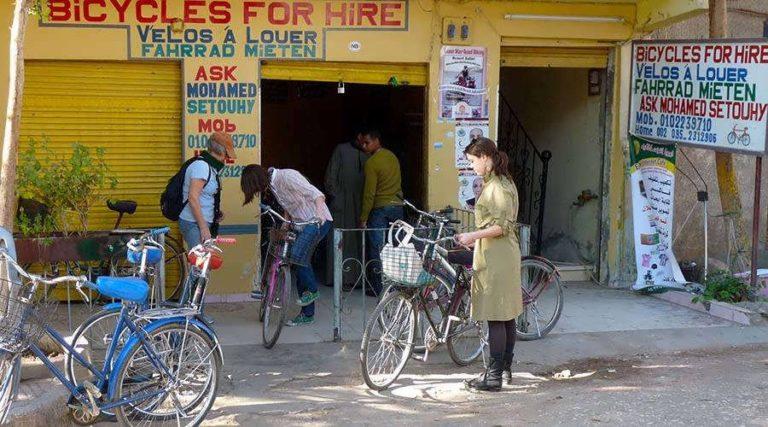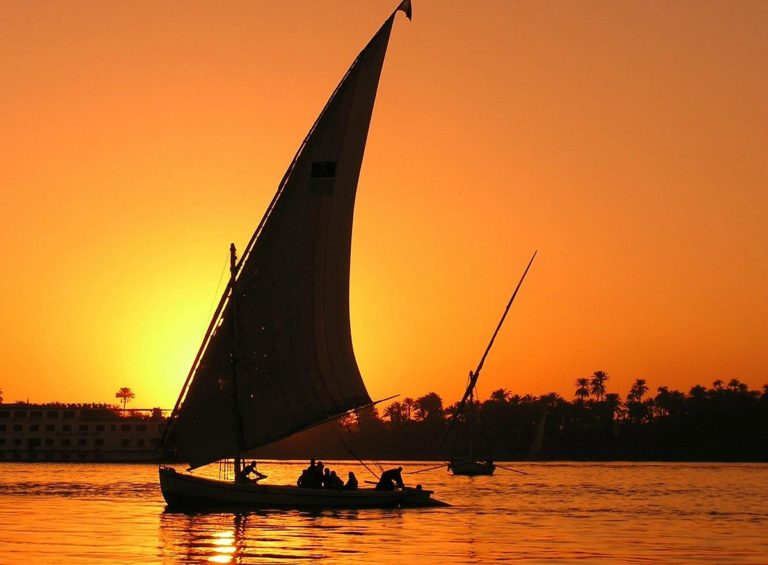Getting around Luxor
Different ways to travel
Luxor is renowned as the world’s greatest open-air museum, with the Nile dividing it into two halves. The lively East Bank features Luxor Temple, Karnak, and most hotels, while the quieter West Bank is home to the Valley of the Kings, Hatshepsut’s Temple, and Medinet Habu.
Navigating Luxor can be tricky—should you use a taxi, Caleches, or the public ferry? How much should you pay for a driver? This guide provides practical tips and local advice to help you explore Luxor with confidence.

Getting Around Luxor: An Overview
Transportation in Luxor is a mix of modern convenience and traditional charm. You’ll find taxis, minibuses, ferries, bicycles, and even horse-drawn carriages. However, unlike Cairo, there are no metro lines, so most journeys require negotiation and flexibility.
- East Bank: Compact and walkable, with taxis and Caleches for trips.
- West Bank: Requires crossing the Nile, then hiring a driver, taxi, or bicycle to reach the tombs and temples.
- The Nile: A transport route in itself, with ferries, motorboats, and feluccas connecting both sides.
The golden rule: always agree on the price before you start your journey.
Luxor Tours & Activities
Looking to save some costs on your travel? Why not join a shared group tour to explore Luxor, Egypt? Here are some activities you might be interested in:
East Bank Transportation
The East Bank is where most visitors stay, and it’s the easiest part of Luxor to navigate.
Walking in Luxor: If your hotel is near the Corniche, you can walk to Luxor Temple, the souks, and the Nile promenade. Walking is best in the cooler hours of morning and evening. The streets are lively.
Taxis in Luxor: Taxis are everywhere, and drivers will often approach you before you even need them. There are no meters, so negotiation is essential.
- Short rides within the East Bank: 30–50 EGP
- To Karnak Temple: 80–100 EGP
- To the airport: 200–250 EGP
Tip: If a driver quotes a price that feels too high, smile, thank them, and walk away. Another taxi will appear within minutes.
Carriages: Horse-drawn carriages (caleches) are traditional but touristy. If you choose one, agree on the fare upfront, and check the condition of the horse, many travelers prefer to avoid them due to animal welfare concerns.
Ride-hailing app: Uber doesn’t operate in Luxor, but inDrive does operate. Taxis remain the default.

West Bank Transportation
The West Bank is where Luxor’s most iconic sites lie, but it requires crossing the Nile.
Crossing the Nile
- Public ferry: The cheapest and most authentic way to cross, costing just 5–10 EGP. It runs frequently and is used by locals.
- Private motorboats: Faster and more flexible, costing 20–50 EGP per person. They’re also a great way to enjoy the Nile at sunset.
Taxis and Drivers on the West Bank: Once across, you’ll find taxis and drivers waiting. Hiring a driver for the day is the most convenient way to explore multiple sites.
- Half-day hire: 250–350 EGP
- Full-day hire: 400–600 EGP
This usually includes stops at the Valley of the Kings, Hatshepsut’s Temple, Medinet Habu, and the Colossi of Memnon. Always confirm the itinerary before setting off.
Minibuses: Shared minibuses are the cheapest option, but they can be confusing for first-time visitors. They’re best for adventurous travelers who don’t mind figuring out routes with locals.
Cycling in Luxor: For a slower, more immersive experience, consider renting a bicycle on the West Bank. The terrain is flat, and cycling between temples is a memorable way to explore. Rentals cost around 30–50 EGP per day. Just avoid midday heat and carry plenty of water.

Nile Transport
The Nile isn’t just a divider—it’s a highlight of Luxor travel.
- Public ferry: Budget-friendly and authentic.
- Private feluccas: Traditional sailboats that offer a romantic, leisurely way to cross or cruise. Best enjoyed at sunset.
- Motorboats: Faster and more practical than feluccas, especially if you’re short on time.
- Cruise boats: If you’re traveling between Luxor and Aswan, multi-day Nile cruises combine transport with sightseeing in style.

Unique Way to Get Around Luxor
Luxor also offers some unforgettable, if unconventional, ways to see the city.
- Hot air balloon rides: While not a mode of transport, balloon rides over the West Bank at sunrise are one of Luxor’s most iconic experiences. Prices range from 1,500–2,000 EGP per person.
Practical Tips for Getting Around Luxor
- Travel early: Start exploring by 7 AM to avoid the midday heat.
- Hydration and sun protection: Always carry water, sunscreen, and a hat.
- Negotiation is normal: Almost all transport requires bargaining. Stay polite and firm.
- Costs to expect:
- Taxi within East Bank: 30–50 EGP
- Ferry crossing: 5–10 EGP
- Private boat: 20–50 EGP per person
- Full-day driver on the West Bank: 400–600 EGP
- Bicycle rental: 30–50 EGP per day
- Accessibility: Some transport options, like ferries, may be challenging for travelers with mobility issues. Hiring a private driver is the most comfortable solution.

Suggested Itineraries by Transport Mode
One Day on the East Bank: Walk along the Corniche, visit Luxor Temple, and take a taxi to Karnak. End the day with a felucca ride at sunset.
One Day on the West Bank: Take the public ferry across, hire a driver for the day, and explore the Valley of the Kings, Hatshepsut’s Temple, and Medinet Habu.
Budget-Friendly Day: Use the public ferry and shared taxis to reach the West Bank sites. It’s slower but much cheaper.
Slow Travel Day: Rent a bicycle on the West Bank, cycle between temples, and finish with a sunset felucca ride.
Getting around Luxor is an adventure in itself. Whether you’re haggling for a taxi, sailing on a felucca, or exploring ancient temples, each trip adds to your experience. Combine transport modes: walk the East Bank, ferry across the Nile, hire a driver for the West Bank, and enjoy a sunset sail. With a bit of planning and flexibility, you’ll see that transportation in Luxor is about experiencing the city’s rhythm at your own pace.
Got a Question?
F.A.Qs
Yes, taxis are safe, but always agree on the fare before starting.
The public ferry costs just 5–10 EGP, making it the cheapest way to cross.
On the East Bank, yes—Luxor Temple, the Corniche, and the souks are walkable. On the West Bank, distances are too great, so transport is essential.
Hire a driver for the day or join a guided tour. Cycling is possible but challenging in the heat.
There are no Uber in Luxor but inDrive operate, The easiest way is to get a taxi from the city.
Did you know that
By purchasing through our links, you support us at no additional cost.
Thank you for your support. ♥️
